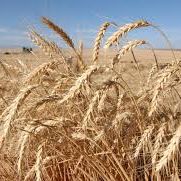MIAOTongTong, WANGLongJin, YANGRuiTing, DAIChengCheng, LIUShiChao, LINan, LIDongXiao-
【Objective】This research has been conducted to clarify how exogenous melatonin interacts with stress responsive factors of abscisic acid (ABA) and hydrogen peroxide (H2O2) to enhance wheat drought resistance of wheat and explore the underlying mechanism.【Method】Wheat varieties Jimai 22 and Hengguan 35 were used as experimental materials, and six treatments were designed: normal water treatment (CK), exogenous melatonin treatment (MT), drought treatment (DS), melatonin treatment under drought stress (DS+MT), melatonin and ABA inhibitor fluoridone treatment under drought stress (DS+MT+Flu), and the treatment of melatonin and H2O2 scavenger diphenyl chloride iodide salt (DS+MT+DPI) under drought stress. The key physiological indicators of wheat roots and above-ground plants (chlorophyll, net photosynthetic rate (Pn), ABA, endogenous melatonin, malondialdehyde (MDA), superoxide anion (), H2O2 and their antioxidant enzyme activities) were studied, focusing on the changes and response relationships in wheat roots and aboveground plants.【Result】Under normal conditions, the application of exogenous MT could significantly increase the endogenous melatonin content in plant leaves and roots, improve the chlorophyll a/b, Pn, and root fresh weight of the two wheat varieties, enhance the activity of superoxide dismutase (SOD) and peroxidase (CAT) in plants, and reduce the content of MDA, , and leaf ABA. Under drought conditions, applying MT treatment (DS+MT) could significantly increase the total chlorophyll content, Pn, transpiration rate (Tr), instantaneous water use efficiency (WUET) of Jimai 22 and Hengguan 35, with the increases compared with the DS treatment being 14.62%, 26.22%, 18.06%, 6.92% and 6.20%, 49.32%, 16.41%, 28.89%, respectively; Additionally, the SOD activity, CAT activity and MT content in the leaves and roots of Jimai 22 increased by 2.66%, 34.40%, 136.72% and 4.80%, 25.96%, 0.48%, respectively, compared with DS treatment. The SOD activity, CAT activity and MT content in the leaves and roots of Hengguan 35 increased by 32.08%, 24.08%, 24.65% and 83.51%, 4.49%, 61.80%, respectively, compared with DS treatment. At the same time, compared with DS treatment, DS+MT treatment showed better effects on Jimai 22 and Hengguan 35, the leaf ABA content significantly decreased by 36.94% and 6.78%, while the MDA, H2O2, and , contents in the leaves and roots also significantly decreased. The DS+MT+Flu and DS+MT+DPI treatments further enhanced the improvement effect of MT on the aboveground dry weight and SOD activity of Jimai 22, while significantly reducing the contents of ABA, endogenous MT, and peroxidation product; but it showed a negative regulatory effect on Hengguan 35, such as reducing chlorophyll content, leaf area, and aboveground fresh weight, whereas increasing POD activity and leaf MDA and ABA content. All these demonstrated the differences between the varieties.【Conclusion】Under drought stress, the application of exogenous melatonin could effectively enhance the drought resistance of wheat seedlings, and melatonin had two pathways for drought resistance: ABA-dependent and ABA-independent response factors; ABA and H2O2 act as downstream signals of MT. There were both antagonistic and synergistic relationships between ABA and MT, and an antagonistic effect between H2O2 and MT. The interaction between ABA and H2O2 varied by variety and plant parts.
